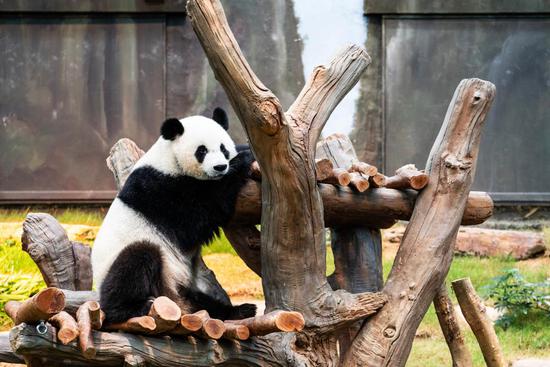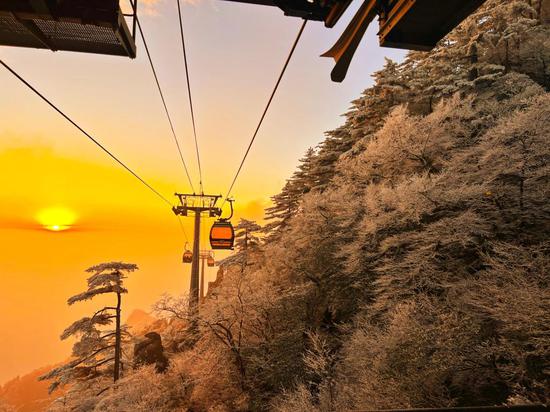Thursday marks the 10th anniversary of the world's largest water diversion project - the first phase of the eastern and central routes of the South-North Water Diversion Project - through which more than 76.7 billion cubic meters of water have been transferred, according to a press conference held by the State Council Information Office.
The water transferred is equivalent to more than 5,000 West Lakes or one seventh of Lake Erie in North America. Public information shows Lake Erie is 484 cubic kilometers in volume.
The mega project has benefited more than 185 million people in 45 large and medium-sized cities along the routes, and its coverage keeps expanding. Through comprehensive measures such as water source substitution and ecological replenishment, the groundwater levels in North China have generally risen, and a large number of rivers and lakes have regained vitality, Vice Minister of Water Resources Wang Daoxi said at the press briefing.
The central route, which is the most prominent, begins at the Danjiangkou Reservoir in Central China's Hubei Province and runs through Henan and Hebei provinces before reaching Beijing and Tianjin municipalities. The eastern route transfers water from East China's Jiangsu Province to areas such as Tianjin and Shandong, the Xinhua News Agency reported.
At present, 80 percent of urban Beijing's water supply is diverted from the south through the project. The "mother river of Beijing," the Yongding River, which was cut off in 1996, has been flowing all year round since 2021, Wang said.
The water consumption per 10,000 yuan of GDP in the seven recipient provinces and regions was 35.7 cubic meters in 2023, dropping by 41.3 percent from 10 years ago. The water consumption per 10,000 yuan of industrial added value is 30.6 cubic meters, down by 36.2 percent in the same period, Wang said, noting that the water efficiency levels in Beijing and Tianjin, both water-receiving regions, are currently among the highest in the country.
Over the past 10 years, the project has undergone an upgrade in informatization, digitalization and level of intelligence. The BeiDou Navigation Satellite System (BDS), drones and underwater robots have been used in combination with manual inspections to ensure round-the-clock monitoring of the project, according to the press conference.
From the earliest proposal of the idea to its realization today, the South-to-North Water Diversion Project has undergone a journey of over 70 years. Li Yong, an official from the project's management sector, told the press conference the significance of the project can be summarized by two keywords "foundational" and "strategic."
It is "foundational" as it ensures the supply of drinking and industrial water, serves the repair of water ecology and the food security. In Huanghuaihai region, an important grain-producing area in China, the mega project provides sufficient water to the cities, allowing water resources occupied by cities to return to their original agricultural purposes, Li said.
It is "strategic" as it helps dozens of major cities in the north to ensure there are no major water shortage issues. Furthermore, it adjusts industrial structures, inspires water-efficient agriculture, industries and services, and facilitates the regional integration of Beijing, Tianjin and Hebei, Li added.


















































 京公网安备 11010202009201号
京公网安备 11010202009201号
